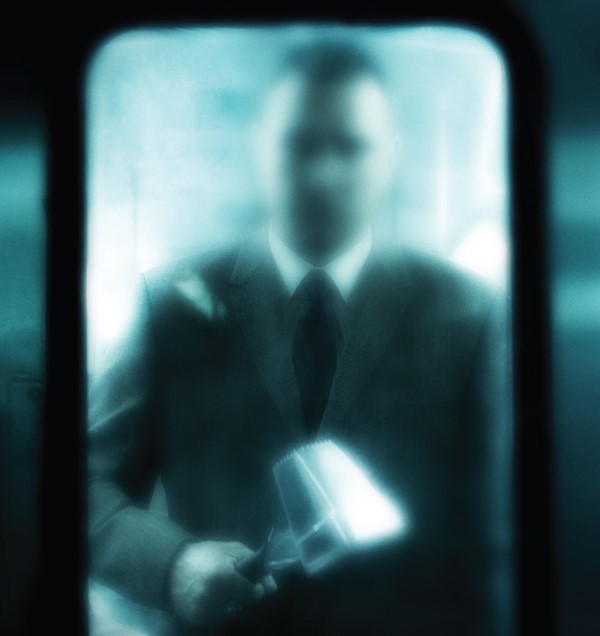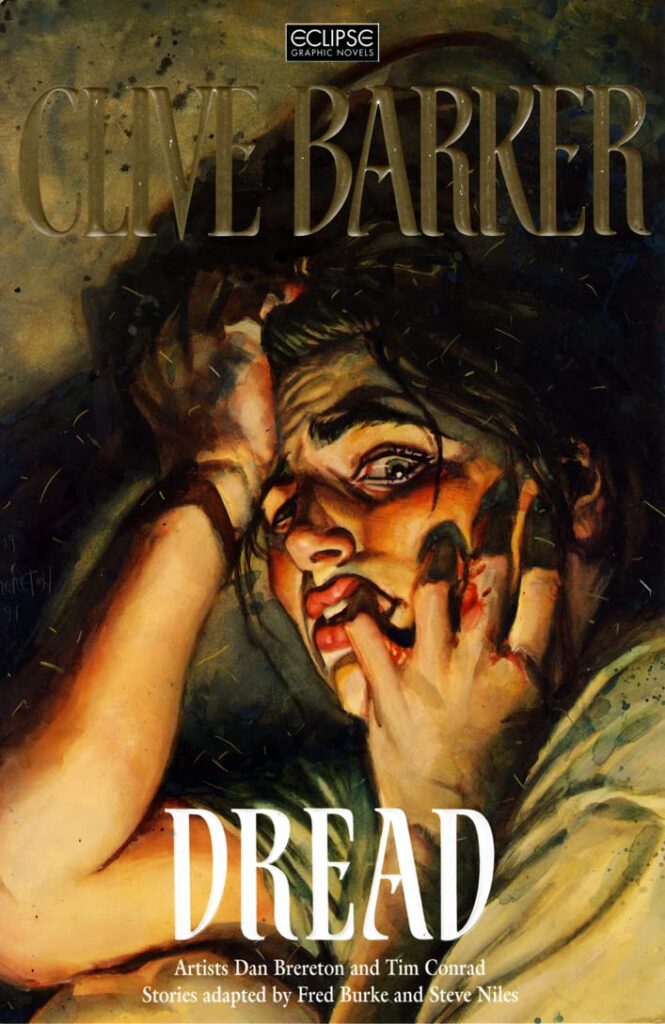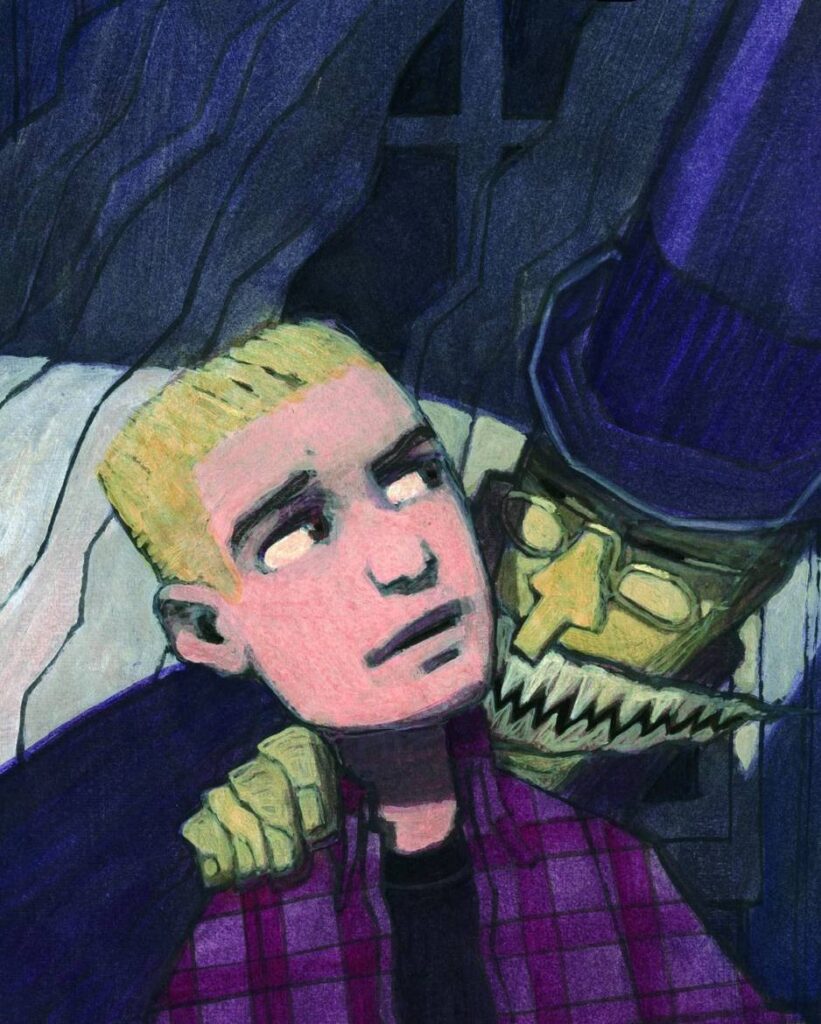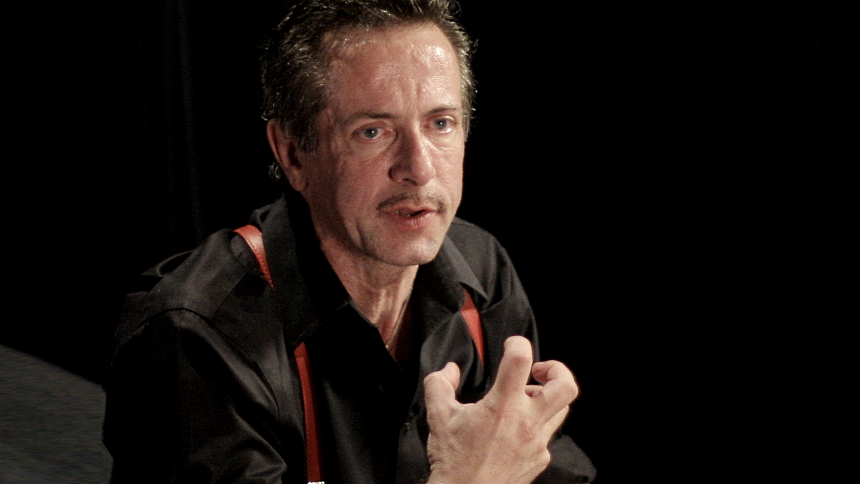By: Mike Lera
Novelist. Playwright. Painter. Creature designer. Comic artist. Game developer. Graphic novelist. Photographer. Short story author. Poet. Actor. Producer. Screenwriter. Director.
While it is almost impossible to fit all of these titles on his office door or business card, it’s safe to say that “Imaginer” could best sum up the occupation of Clive Barker.
From his early work in the theater to his breakout success with Hellraiser to now being one of the most influential icons of horror and fantasy who has managed to reach audiences of all ages and in various forms of media, Clive Barker and his unorthodox brand of storytelling has not only earned him a throne amongst cult film devotees, but also accolades within pop culture, his famous characters “Pinhead” and “Candyman” amongst the ranks of “Freddy”, “Jason” and “Michael”.
During a recent Hellraiser panel at Monsterpalooza in L.A., Doug Bradley (who played “Pinhead”) spoke about his relationship with Barker and his unique inventiveness and spirit.
“It goes back to high school, 1969, in Liverpool, when I was cast in the school play, which included this unforgettable, witty, funny, very scatological, larger-than-life guy named Clive Barker,” Bradley recollects. “He’s very hard to encapsulate. I won’t use the ‘G’ word easily or lightly, but Clive is… a genius. He could have made a mark as [just] a painter; a graphic artist; an animator; a puppeteer; a novelist; a director; an actor. But he’s a kaleidoscope of all these things.”
An artist who chooses to create things that are inspired solely by him and not catering to the masses, a lot of Barker’s brilliant work often goes unnoticed or unappreciated, and though some readers and viewers may not get Barker, there is no denying that his strong, innovative sense of character creation and development reaches levels far, far beyond our realm.
Strolling through an art museum featuring his countless storybook characters, Barker once stated, “Stories are only as good as their villains. Particularly fables, and stories that have mythological base.”
To help us in reaching the more obscure, unknown regions of Barker’s work, we’ve chosen a few of the macabre master’s lesser-known villainous characters to observe and ponder over, giving them the acclamation they deserve as they have such sights to show us!





Mr. Hood – The Thief Of Always
Barker’s first children’s book The Thief of Always, published in 1992, is a fable that involves a young boy named Harvey Swick who is incredibly bored with his home life and frustrated with his parents. One day, Harvey is visited by a strange little guy named Rictus who takes the excitement-starved child out of his home, Peter Pan-style, and to an obscure, magical place called Holiday House, hosted by a creepy mysterious “man” named Mr. Hood. Here, children can experience all four seasons and the holidays of Christmas, Halloween and Thanksgiving in the course of a day – every day! Candy, costumes, food, presents – the works! It isn’t long, however, until Harvey senses something wrong about Holiday House and Mr. Hood, and after some time there, he begins to miss his parents and his home. Harvey discovers that Mr. Hood captures the souls of children, turning them into dead-eyed “fish” where they’re thrown into his backyard called The Forbidden Lake, and it is up to Harvey to save not only these kids, but his own self as well!
Though The Thief of Always is dubbed as a “children’s book”, it is definitely material for all ages, horror fan or not. A 225-page story with an “always question things” theme for young readers, Mr. Hood is certainly one of the creepiest of Barker’s bad guys, cleverly disguising himself so that his young guests don’t see the hideous abomination he really is. A terrific, classic boogeyman and a distorted homage to Pinocchio’s The Coachman who offers children pleasures that only lead to their doom! Superbly illustrated by Barker, of course, Mr. Hood and his Holiday House had also found their way into graphic novel form, published by IDW in 2005.
Christopher Carrion – Abarat
Most of us, if we’re honest, would love to find some way to channel our wildest dreams and nightmares and bring them to life, no matter how crazy or bizarre. That’s what’s so great about Clive Barker’s outlandish worlds – we’re given permission to do so! One such world is Abarat, featuring a truly terrifying and ludicrous antagonist – Christopher Carrion.
A Young Adult fantasy published in 2002 that is the first of a three-book series, Abarat sweeps you into the journey of Candy Quackenbush who lives in Chickentown, Minnesota, a curious teen who finds at the edge of her quaint, quiet little town a lighthouse – with no water surrounding it. Here, she meets John Mischief, a Loki-like man-monster with antlers with seven heads of his brothers on them, all named “John”. From this lighthouse, these two set off for Abarat, a world parallel to ours with twenty-five different islands, each one for each hour of our days.
Of the various characters in Abarat, Christopher Carrion takes the lead in terms of oddity and zaniness, having two thick “tubes” protruding out his bald head with which to siphon his nightmares out of his brain and into a contraption surrounding the lower part of his face and mouth, expelled into a “soup dish” so that Carrion may indulge in these nightmares.
Carrion’s desire? To simply rule, of course!
Carrion and the other weird characters in Abarat serve as prime examples of Barker’s clever, yet “out there” tropes to his stories – symbolisms with deeper meanings.
At a recent “Candyman” panel, director Bernard Rose (with Tony Todd) spoke on Barker’s mythological, and sometimes, biblical elements. “The ‘bee thing’ in the film originally came from Clive, from one of the riddles of Samson [from the Bible], after he took honey from the corpse of a lion. ‘…and out of the strong came something sweet.”
Quaid – Dread (Novella)
Published in Barker’s Books of Blood, Vol. II in 1984, Dread is the tale of a young university student named Steve Grace who meets an older philosophy student named Quaid. Quaid shares with Steve his obsessions with wanting to know the core reasons behind people’s primal fears, finding out how they may overcome them, and, in turn, helping Quaid overcome his own fears. As their friendship furthers, Steve learns that Quaid secretly experiments on human subjects by kidnapping them and forcing them to confront their worst fear, i.e. starving a young vegan girl and locking her in a room with nothing to eat but rotten meat. Steve later finds himself trapped as one of Quaid’s test subjects, placed in a sound-proof room where his greatest fear is unleashed – becoming deaf once again (having been temporarily deaf as a kid). Steve eventually becomes insane in his “prison”, and after he is drugged by Quaid, ends up in a shelter. He is given mismatched clothes and oversized shoes to wear, and together with his bright red chapped lips, Steve unintentionally takes on the semi-appearance of a “clown”. Steve then steals an axe and visits Quaid’s house, where he murders him.
As it turns out, Quaid’s greatest fear was to one day be killed by a clown with an axe!
Dread’s Quaid is certainly the villain – kidnapping his test subjects and torturing them for his own agenda. But, in reality, he is just like us – curious, driven, fearful. Like Saw’s Jigsaw who puts his subjects through the ringer for a greater good, Quaid wants to help not only himself, but others as well. He wants to find out the deep core of our fears, why we have them, and ways we may conquer them. Unfortunately, in the process, he becomes Dr. Frankenstein and creates a monster he could not control (mind you, Dread was pre-Pennywise and Art the Clown, so reading about a clown with an axe at the time was intensely scary and different!). A prime example of a “bad guy” we feel sympathy for and a key ingredient to a solid book or film. As Marvel Comics founder Stan Lee once said, “The secret to storytelling is to have characters that people care about. Once you have that, telling stories is easy.”
Mahogony – The Midnight Meat Train (Film)
Though the movie did poorly upon its 2008 release, The Midnight Meat Train’s villain Mahogony, aka “The Subway Butcher”, is a memorable character amongst horror fans, introduced to us as a short story (of the same name) in Barker’s Books of Blood, Vol. One.
Played convincingly by Vinnie Jones, Mahogany works as a blue-collar, aproned butcher by day. By night, he rides New York’s subway trains in a suit and tie, seeking out healthy victims and brutally murdering them with his trusty mallet. He then strips them, shaves their bodies completely, detaches their teeth, eyeballs, fingernails and toenails and strings them up on the trains’ handles by their feet. Yet this is not for his own pleasure. No, Mahogony is simply a “tool”, used by a secret government operation. His job is simply to find human bodies with which to feed a monstrous colony of creatures that dwell under the city, and by doing this, a “peace treaty” is kept between humans and these beasts.
Clearly, Mahogony comes straight out of Barker’s cerebrum. Although there’s not much dialogue and personality to him in the film version, Mahogony’s actions and reasons for being a serial killer gives him good dimension as a character, and like Quaid, Mahogony wishes to help mankind at the expense of a few innocent souls.
Interestingly, Mahogony was conceived when Barker had first visited New York and got lost in the subway, ending up in an area where he was totally alone and was certain he’d be killed by someone like The Butcher. Aside from cartoonish CGI and flimsy dialogue, Meat Train isn’t a bad film, having an excellent cast (Bradley Cooper, Leslie Bibb, Brooke Shields and Ted Raimi) and co-produced by Barker alongside Japanese filmmaker Ryuhei Kitamura as director.
In commemorating the ingenuity and distinctiveness of his fellow scare-smith, Stephen King once said, “Barker is not merely good, he is great. Not great in the way mainstream critics are liable to appreciate for a good many years, not great in a way academicians are ever going to like very much, but great in the only way that matters.”
END
